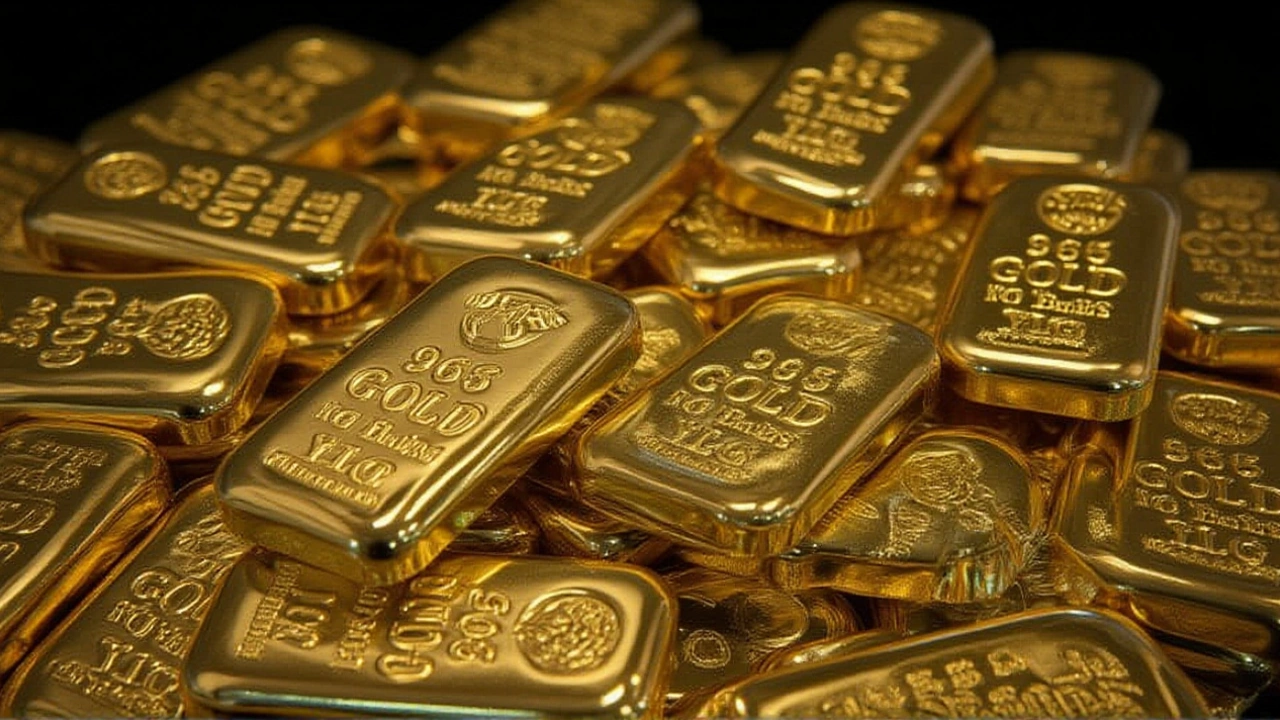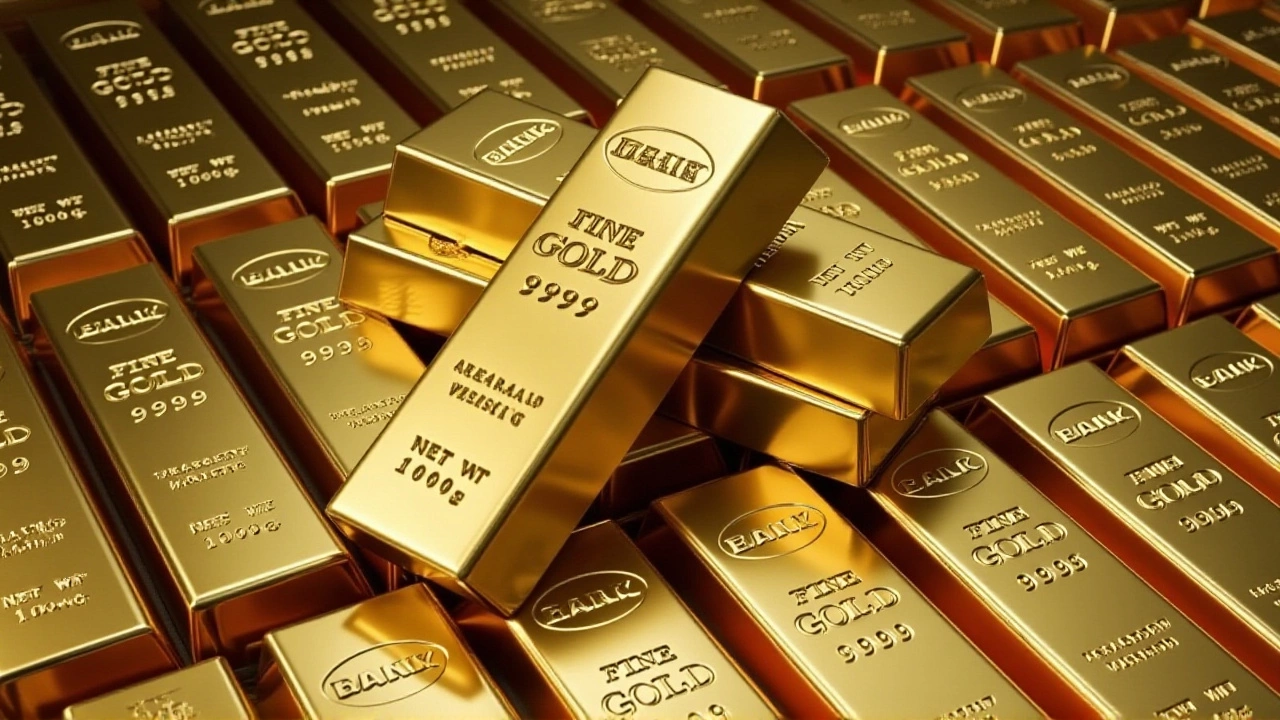When Natasha Kaneva, Head of Global Commodities Strategy at J.P. Morgan warned that gold could breach $4,000 an ounce by mid‑2026, Indian buyers felt the heat almost immediately. The warning landed on July 9, 2025, the same day Goodreturns published a deep‑dive highlighting how the gold price surge in India is now tethered to three forces: soaring international spot rates, a weakening rupee, and the country's layered import duties. In plain terms, if the world price climbs, the Indian headline number climbs faster.
International Drivers of Indian Gold Prices
International gold prices, quoted in U.S. dollars, are the single most critical determinant for India, according to the World Gold Council's 2024 annual report. The spot price peaked at $3,500 per ounce in April 2024 – a 30% year‑to‑date jump that blew past analysts' expectations. When the dollar‑denominated price nudges upward, a concurrent rupee depreciation turns the same ounce into a pricier Indian‑rupee figure. For instance, the rupee fell to 83.50 per dollar in March 2025, prompting a 4.7% surge in domestic gold prices within a week, even though the global spot rate held steady.
Adding fuel to the fire, central banks worldwide have been diversifying away from the dollar, buying more gold. The World Gold Council logged 1,136 tonnes purchased in 2023 and 1,037 tonnes in 2024, reinforcing a structural bull case that J.P. Morgan’s research team, led by Kaneva, echoes.
Domestic Policy and Tax Structure
India’s levy ladder starts with a 15% customs duty on imported gold – a figure the Ministry of Finance in New Delhi set in August 2023. On top of that, a 3% Goods and Services Tax (GST) applies at the point of sale, plus a 1% Agricultural Infrastructure and Development Cess (AIDC). The net impact? Indian consumers typically pay 10‑12% more than the international spot price.
To illustrate, a $3,500/oz ounce translates to roughly ₹1,20,000 per 10 grams on the Multi‑Commodity Exchange, but after duties and taxes the retail price can climb to ₹1,30,000‑₹1,35,000. The Gold Association of India reported that jeweller making charges add another 8‑12% on average, pushing the final sticker price even higher.
Seasonal Demand and Festival Effect
Gold isn’t just an investment in India; it’s a cultural staple. The Times of India forecasted a buying surge ahead of Dhanteras on October 17, 2025, when households traditionally purchase gold as a symbol of wealth and prosperity. Analysts expect demand to lift prices by 5‑7% in the two weeks before Diwali, especially if the global market remains volatile.
Historically, the festival season accounts for a sizable chunk of annual sales. Between 2022‑2024, jewellery demand rose 22.3% year‑over‑year, helping India overtake China as the world’s largest gold consumer in 2024, despite the pandemic‑induced slowdown.

Expert Views and Market Forecasts
Kaneva’s team projects an average spot price of $3,675 per ounce for Q4 2025, edging toward $4,000 by Q2 2026. Meanwhile, independent analyst Sagar Sinha, in a July 2025 YouTube briefing, pushed the ceiling to $4,900 per ounce by 2026 – a figure that would crown Indian gold at roughly ₹1,52,150 per 10 grams, assuming duties stay unchanged.
Univest’s 2025 study added another layer, noting that the Federal Reserve’s rate hikes could temporarily dampen gold demand by making U.S. bonds more attractive. Yet, any easing of rates or heightened geopolitical tensions would likely reignite the bull trend.
What Consumers Can Expect
- Short‑term volatility: Prices could swing 4‑6% in response to rupee moves or global news.
- Long‑term upward bias: With structural demand from festivals and central banks, the baseline trend stays positive.
- Higher effective cost: Expect to pay at least 10‑12% above the international spot rate after duties, GST, and making charges.
- Strategic buying windows: Market analysts recommend buying on dips during global price corrections, especially before major festivals like Dhanteras.
In short, the Indian gold market is dancing to a three‑step beat – global spot price, currency conversion, and domestic tariffs. Any shift in one step reverberates through the whole routine.

Key Facts
- April 2024 spot price high: $3,500/oz (+30% YTD).
- J.P. Morgan forecast: $3,675/oz (Q4 2025) → $4,000/oz (Q2 2026).
- Import duty (incl. AIDC): 15% (as of Aug 2023).
- GST on gold: 3%.
- Rupee at 83.50/USD (Mar 2025) added ~4.7% to domestic price.
Frequently Asked Questions
How will the upcoming Dhanteras festival affect gold prices?
Times of India predicts a 5‑7% price lift in the two weeks before Dhanteras on October 17, 2025, as households purchase gold for traditional reasons. The surge is amplified if global spot prices stay high, because the domestic price already includes duties and taxes.
What role does the Indian rupee play in shaping local gold prices?
When the rupee weakens against the dollar, each ounce of gold costs more rupees. For example, a slide to 83.50 ₹/USD in March 2025 pushed Indian gold up 4.7% in a week, even though the global spot rate held steady.
Are the current import duties likely to increase further?
The Ministry of Finance raised duties from 10.75% to 15% in August 2023 to curb the current‑account deficit. While no official announcement has been made for 2025, any future hike would immediately translate into higher retail prices, given the duty’s sizable share of the final cost.
What does J.P. Morgan’s forecast mean for Indian investors?
Kaneva’s team sees spot prices averaging $3,675 /oz by Q4 2025 and reaching $4,000 /oz by mid‑2026. After accounting for duties, GST, and making charges, Indian buyers could face retail prices around ₹1,35,000‑₹1,40,000 per 10 grams, suggesting a long‑term upward trend for investors.
Can buying gold now be a good hedge against inflation?
Gold traditionally acts as an inflation hedge, and with India’s large domestic demand and continued global geopolitical uncertainty, many analysts argue the metal remains a safe‑store of value. However, short‑term price spikes driven by currency moves or duty changes can affect timing decisions.

